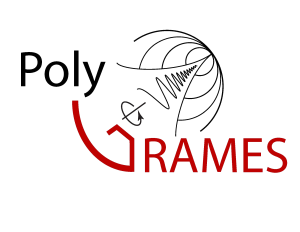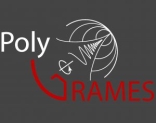Many technologies for fabrication of microwave circuits are available at Poly-Grames including: printed circuit board on duroid substrates, thin film MHMIC on ceramics, laser machining of metals, ceramics, TMM, etc., and high precision machining on CNC.
IMPORTANT!
Before sending any fabrication file, please take your time and pass the checklist below:
- Does the layout comply with the requirements stated in the document?
- Is the Gerber file exported in the proper format (RS274X, precision 2.4)?
- Does unit is in inch?
- Is the DXF file for drilling in the proper units and format (inches, 2.4, dxf2000)?
- Has the DXF file only one layer, is that layer named as the file?
- Are the holes circles, not segments in the .dxf?
- Did you include the substrate type and thickness?
- If you need a base, did you provide a 2D drawing in DXF? (your drawing software allows you to transform any 3D sketch in a 2D one)
- Did you include all extra information needed to fabricate the circuit and the base?
- Did you rename all your files (Gerber and dxf) correctly?
Please take note, that if your files don’t comply with the requests, we are not able to process them, hence some major delays will occur.
Single Layer PCB
1- Single Layer PCB
Specifications for circuits
- Max size 8’’X 8’’
- Min. line width 5 mils
- Min. gap between lines 5 mils
- Connector spacing 0.5’
- Drawing file: Gerber RS-274X , precision 2.4
- Unit is inch
- Each layer has to contain text with a minimum height of 80 mils and track width 8 mils
- Cutting marks: 200x200x20 mils
- Origin at the lowest left corner of the layout
2- Single Layer with vias
3- Circuits with riveted vias
Specifications for circuits
- Layout files: Gerber RS-274X, precision 2.4
- No drill file required
- Only one hole size: 31 mil

4- Plated Vias
Specifications for circuits
- Layout file: Gerber RS-274x, 2.4
- Hole file dxf, 2.4, single layer
- Holes are filled on the layout file
- Three alignment holes of 66 mils dia with donuts outside of layout
- Aspect ratio for plated hole max 2:1
- Clearance of 10 mils
- Max PCB size 6” X 6”
- Laser cutting area is limited to 7″ X 7″
5- Laser drilling
Specifications for circuits
- For laser drilling use poly-line
- Holes need to be circles, not line segments
- Minimum space 10 mil between 2 holes
- For soft substrates maximum thickness: 60 mils
- For ceramic: 20 mils
- Maximum circuit size 7” X 7”
- Oversize of cutting 2 mils
9- Component assembly
10- Component pad spacing
- 0402 Gap 20 mil Pad width 25 mils length 55 mils
- 0603 Gap 30 mil Pad width 35 mils length 75 mils
- 0805 Gap 40 mil Pad width 55 mils length 95 mils
- 1206 Gap 40 mil Pad width 65 mils length 140 mils
- For integrated circuits refer to the datasheet
- Consider that you will have to solder the components manually, leave enough space

11- Assembly box & base
- Drawing of a 2D box
- Flattened (no 3D) dxf file for each side, or SolidWorks file
- Position of hole on drawing should be accurate and at scale
- Unit is inch
- Origin in the lowest-left corner
- Provide all the information needed (thickness, material, etc)
- SolidWorks files accepted
Assembly base
12- Substrate-Integrated-Waveguide (SIW)
- Holes or slots are cut by laser
- Consider an oversize of 2 mils for laser cutting
- Laser cuts only through-hole
- Aspect ratio of minimum 1:2 (minimum hole diameter at least half of substrate thickness) should be maintained for plating
- dxf file precision 2.4, single layer
13- Partly machined substrate
- The channel is cut by milling, only standard sizes are available. Contact Steve
- Minimum remaining thickness of substrate 10 mils
- Laser cuts only through-hole
- Aspect ratio of minimum 1:2 (minimum hole diameter at least half of substrate thickness) should be maintained for plating
- dxf file precision 2.4, single layer
1- Multi Layer PCB
Specifications for circuits
- In order to make complex RF structures, we developed a method to assemble several substrate layers.
- Epoxy at high temperature and pressure is used to combine the layers.
- The layers can be either printed with via, plated slots or holes
- The final assembly can also be printed, drilled, milled or plated
3- Required files
- Need a 3D drawing to represent the entire circuit
- Plated holes and inner connections are feasible
- If connection is required between two substrates, a plated via is required
- Max size is 2” X 5”
- First substrate is on the bottom
- Text indicating the layer name has to be printed on each layer
- Indicate on the drawing the top or bottom layer
- Ex: S1B ( substrate 1 bottom)
- Gerber file for each layer
- Drill file is a .dxf
- Limited to 7’’ X 7’’ (laser cutting)
- The alignment between substrates is made using 0.125” diameter pins at 2.5” center to center distance
- The layout contains the corresponding donuts of 125 mils internal and 250 mils external diameter
3- MHMIC with via
4- Hole Covering
Required files
6- Conductor Gerber file
7- Resistor mask
9- Die mounted on substrate
10- Die mounted on base
11- Wire Bonding parameters
- Wire diameter: 0.7 mil or 18 µm
- Ribbon: 3 mils X 0.5 mil
- For die mounted on substrate bond length is 2 times the die height
- For die mounted on base the bond length is the spacing between pad and line
- Always provide a wire bonding layout
































